
I am proud of the Japanese team
— It has been 15 years since astronauts began long-duration missions on the ISS. What do you think Japan has gained from participating in the ISS program?
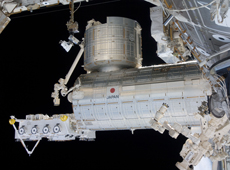 Japanese Experiment Module Kibo (courtesy of JAXA/NASA)
Japanese Experiment Module Kibo (courtesy of JAXA/NASA)
Japan’s Module Kibo and H-II Transfer Vehicle KOUNOTORI (HTV) have accomplished their missions without any serious issues to date. This has established Japan’s track record and reputation around the world for the reliability of our human space technology. What is taking place on Kibo is not only experiments to develop new pharmaceuticals and materials but also observations that could lead to Nobel Prize-worthy discoveries in the field of astronomy. In addition, Kibo has been playing a significant role in helping us acquire the technology we need to extend human space exploration to the Moon, to asteroids, and eventually to Mars.
What is important to remember is that the ISS now involves 15 countries, including Japan. It has been about 15 years since we began long-duration missions on the space station, and counting the two years of assembly prior to that, it’s been more than 17 years. I think it is significant that the ISS has operated for so long as a collaboration among so many countries. The program has had a tremendously positive effect on international cooperation, and I think the most important outcome of Japan’s participation in the ISS is the trust we have earned in the world.
— Working at NASA, what is your sense of the trust they have in Japan?
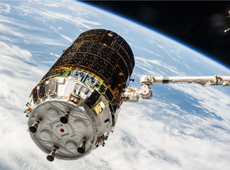 KOUNOTORI 5 captured by the ISS’s robotic arm (courtesy of JAXA/NASA)
KOUNOTORI 5 captured by the ISS’s robotic arm (courtesy of JAXA/NASA)
I often hear good things about the reliability of Japanese experiments. Last year, the Mouse Habitat Unit and the CALorimetric Electron Telescope (CALET) were installed on Kibo. These items and the experimental equipment used on the module previously are all cutting-edge facilities. Experiments on Kibo get a lot of attention both inside and outside Japan. My impression is that Japan is also widely respected for the experience, knowledge and skill of the staff supporting the experiments in the Flight Control Room at the Tsukuba Space Center.
These days, it definitely looks to me like Japan is leading the way in experiments that take advantage of the microgravity environment of the ISS. This is not something that has happened overnight. Our success can be attributed to the experience we have gained since the first flight by astronaut Mamoru Mohri in 1992. Step by step, for almost 24 years, Japan has been maximizing every opportunity to enhance its technological strengths, and now that work is yielding results. I think this is what is helping our country gain the confidence of our international colleagues.
In addition, in August 2015, Japan successfully launched and docked KOUNOTORI 5. Starting with the launch of the first one in 2009, every KOUNOTORI vehicle has completed its mission as planned. KOUNOTORI 5 was under particularly heavy pressure, carrying a lot of expectations from people around the world, because it was launched shortly after three failed ISS resupply missions in six months. Everyone saw how difficult it is, even for the two countries with the most experience in space exploration, to consistently operate spacecraft systems successfully. Therefore, Japan’s success with KOUNOTORI 5 in this situation has further enhanced the reputation of our reliable technology and symbolized our international presence. I felt very proud supporting the KOUNOTORI 5 operation at Mission Control in Houston as I watched how well the Japanese team performed.
A member of Team Japan
— You assisted in the operation of KOUNOTORI 5 as Capcom (capsule communicator). What stands out in your memory of the experience?
 Astronaut Yui (left) training on the ISS for the docking of KOUNOTORI5 (courtesy of JAXA/NASA)
Astronaut Yui (left) training on the ISS for the docking of KOUNOTORI5 (courtesy of JAXA/NASA)
Actually, it was my first involvement in the operation of KOUNOTORI. I had had basic training in its systems, but when I was in space there were no KOUNOTORI flights scheduled. So participating in the operation as Capcom gave me a special feeling. I vividly remember the excitement when KOUNOTORI 5 arrived at the ISS. With astronaut Kimiya Yui maneuvering the robotic arm to capture the spacecraft with his crewmate Kjell Lindgren, the Flight Control Team at the Tsukuba Space Center guiding KOUNOTORI 5 just below the ISS, and myself communicating with the crew as Capcom at NASA’s Mission Control Center in Houston, which was overseeing all of the ISS systems for KOUNOTORI’s arrival, the docking was a true team effort.
Astronaut Yui performed his tasks with the utmost calm, and his handling of the robotic arm was perfect. KOUNOTORI 5 was docked to the ISS for about a month. It resupplied various items such as ISS systems components, equipment for scientific experiments, food and other supplies for crewmembers, as well as removing waste material from the ISS on departure. The operation went very smoothly. We did experience some minor difficulties during the mission, but the Japanese and U.S. control teams worked together and were able to solve each problem. The KOUNOTORI Control Team in Tsukuba and the ISS Control Team in Houston kept calm even when experiencing system anomalies. “Team Japan” delivered an excellent performance thanks to tremendous teamwork. Working as a member of such a team was a very precious experience for me.
— You said the team was capable of a calm approach to dealing with problems. Do you think the team’s performance is improving over time?
I do. I see that the experience from previous missions is always reflected in the next one. The KOUNOTORI 5 flight control team is not the same as at the first launch in 2009. New members join the flight control team on each KOUNOTORI mission. Almost two years passed between the launches of KOUNOTORI 4 and 5, but the turnover did not affect the KOUNOTORI 5 team’s performance – their teamwork was just as solid. This is because the veteran staff members passed on their know-how to new members. And this is possible because KOUNOTORI is launched on a continuous basis. Japan’s space technology is highly respected around the world. In order to be able to hand down such technology to future generations, I believe it is important to continue to pursue space missions.
— Did you have a motto for working as Capcom?
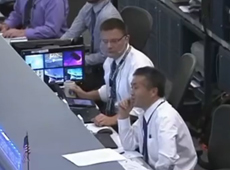 Wakata was the Capcom at NASA’s ISS Mission Control Center (courtesy of JAXA/NASA)
Wakata was the Capcom at NASA’s ISS Mission Control Center (courtesy of JAXA/NASA)
When I was working in space, I was always thinking about what an ideal Capcom would be like. So when I got the job, I kept this in mind, and tried to ensure our team delivered the best performance possible. I was constantly checking on how all the crew members in orbit were doing, so that I could support their work while alleviating their stress up there. And when there was a glitch, I was also very careful to give suggestions to the crew that would help resolve the problem safely and in the shortest amount of time.
On the KOUNOTORI 5 mission, having close cooperation with the team in Japan was critical, so I tried to communicate with them as much as possible before launch. I think this approach is important with any company or project. The key to success is having mutual trust among the team members and good preparation. As long as you have a good handle on crisis management, you can perform your mission successfully regardless of any problems that may arise.
Although the United States and Japan are geographically very far from each other, separated by the Pacific Ocean, I tried not to miss a single chance to communicate by making full use of all communication tools. My experience as an ISS commander taught me the importance of communication between the crew onboard and the mission control centers around the world for a successful operation.
Building on Japan’s strengths
— How is Japanese teamwork viewed overseas?
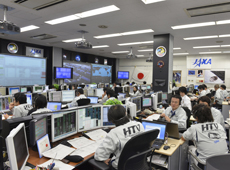 KOUNOTORI Mission Control Center
KOUNOTORI Mission Control Center
Japanese teamwork and reliability are well known. I think the KOUNOTORI 5 flight control team was particularly wonderful. The lead flight director for docking with the ISS was Mayumi Matsuura, and for the undocking and separation from the ISS, it was Maki Maeda. Both of them are great leaders. I got the impression that they had the trust of both the Japanese and NASA control teams. I think the success of KOUNOTORI 5 as well as the proactive approach and skill of Japan’s flight control team have given NASA proof of Japan’s technological capabilities.
On the other hand, people involved in the ISS operation sometimes tell me that Japanese people do not like changes or tend to have strong resistance to them. I hear this not just from the U.S. but also from the Russians and Europeans. I do not think it is wrong to keep using proven techniques. However, when a problem occurs, or when it is obvious that a little improvement can enhance performance, it is important to be courageous and make changes – after considering what is best in the particular situation. When I was ISS commander, there was a situation in which my crew accused me of trying to stick to the precedent in handling a problem. That incident taught me the need to be flexible in finding solutions.
Of course, I pass on these opinions that I have heard to the Japanese team. What is important is to be open to listening to such opinions. Rather than ignoring them, I think it is important to listen, and then express what you would like to do as a team. I take this constructive criticism from others as a sign of their high level of trust in Japan. To meet such expectations, it is important to have the willingness to improve without fearing changes.
— What do you think Japan’s goals should be for its involvement in the ISS program?
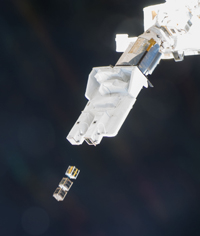 Deployment of small satellites (courtesy of JAXA/NASA)
Deployment of small satellites (courtesy of JAXA/NASA)
In my opinion, Japan should continue to demonstrate its presence by playing to its strengths and its unique abilities. A good example is the release of small satellites from the ISS using the Kibo airlock and robotic arm. Thanks to this technology, opportunities for space utilization are open not only to universities and research institutions in Japan but also to developing nations that do not have the means to launch satellites on their own.
I think future international space missions can benefit from using Japan’s advanced robotics and camera technologies. This is something our international partners are also interested in. For example, Japanese technologies could help build reliable and efficient environmental-control and life-support systems that, for example, can recycle urine into drinking water and remove carbon dioxide. In fact, there’s a verification test for a made-in-Japan water recycling system scheduled to be conducted on Kibo, with the aim of promoting its practical use on future space missions.
Also, it’s important to try to keep improving the spacecraft technology developed for the KOUNOTORI missions. Currently, samples from experiments conducted on Kibo are retrieved by U.S. and Russian spacecraft. It would be great if Japan could develop a retrieval system using its own vehicles. Right now, we are investigating technology for an unmanned space plane as a successor to KOUNOTORI. If that is developed, it will make Japan’s presence stronger.
Japan’s strength is said to be its technology. But technology cannot move forward without the people who develop it. Therefore, in order to keep developing our human resources, I believe it is important to constantly take on new challenges. To me, this means we need to make a greater effort to educate the public about Kibo’s accomplishments. The ISS is scheduled to operate through 2024. There are less than 10 years left, so we should make the most of this superb orbital experiment facility while we can. I also think it is essential to promote an environment in which space utilization is more accessible, in order to get more people interested in using Kibo.
Exploiting Japan’s space technology for the benefit of Asia
— What is your opinion about international collaboration on space missions?
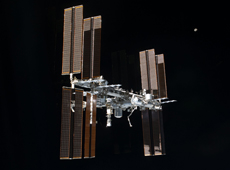 International Space Station (courtesy of JAXA/NASA)
International Space Station (courtesy of JAXA/NASA)
Japan is the only Asian country that is participating in the ISS program. Given its advantages as a nation with advanced science and technology, Japan should use its space expertise for the benefit of the entire Asian region. It is important to continue to improve our relationships with other Asian countries in order to increase the number of partners in human space activities. In order to achieve this, we need to be more aggressive in promoting the activities taking place on Kibo. In collaboration with the United Nations, Japan is conducting a program that allows developing countries to release their own small satellites from Kibo. We need to let more people around the world know about Kibo’s contributions to international cooperation through the use of social media. If we become more conscious of the importance of communicating about our work in space, this will eventually lead to more international cooperation. I also think it is important for Japan to be communicating clearly with our partner nations about our direction on future international space missions.
— Finally, could you tell us about your own plans for the future?
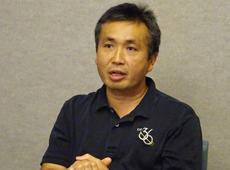
My current role at the NASA Astronaut office is serving as Capcom and the lead for the ISS payloads group, which is involved in the development of new experiment equipment and the planning of payload operation procedures. To increase the number users in ISS utilization, we are in the process of simplifying and streamlining the payload development process, to accommodate the needs of payload developers. At the same time, though, we cannot overlook the need to ensure safety and operational efficiency for the crewmembers in payload operation.
My immediate goal is to excel in my responsibilities. At the same time, I want to make sure that there are more Japanese ISS commanders assigned to flight in the near future among the experienced group of the JAXA Astronaut Corps. I think an important part of my mission is to expand the activities of Japanese astronauts. And hopefully I can go back to space once again before retirement! When you look at the United States, Russia and Europe, astronauts are still working on the ISS at the age of around 60. Japan has the longest life expectancy in the world, and I consider it to be my new challenge to participate on a future spaceflight when I am even older than that. Until then, I will work hard to stay qualified as an active astronaut.
Koichi Wakata Dr, Eng.

Program Manager of International Space Station Director JEM Mission Operations and Integration Center, JAXA Astronaut, Human Spaceflight TechnologyDirectorate, JAXA
After graduating with a degree in Aerospace Engineering from Kyushu University, Wakata was hired by Japan Airlines Co., Ltd. as an aircraft structural engineer. In 1992, he was selected as an astronaut candidate by NASDA (now part of JAXA), and in 1993, he was certified by NASA as a Mission Specialist. In 1996, Wakata flew on the Space Shuttle (STS-72) as the first Japanese Mission Specialist. On his second Space Shuttle mission, in 2000 (STS-92), he became the first Japanese astronaut to participate in the assembly of the International Space Station. He earned a Ph.D. in 2004. In 2009, he flew on the ISS (Expeditions 18, 19 and 20) for four and a half months as the first Japanese astronaut to perform a long-duration mission in space. Wakata was the chief of the Station Operations Branch of NASA’s Astronaut Office from 2010 to 2011. He served as the chief of the JAXA astronaut group from 2010 to 2012. From November 2013 to May 2014, he was a crew member of Expedition 38/39 on the ISS, and during Expedition 39, he was the first Japanese ISS commander. He has spent more than 347 days in space during his four missions to date.
[ April 13, 2016 ]
- Team Japan Earns the Trust of the World
- Rock-Solid Technology, Made in Japan
- New Directions for Research on Kibo
- In Space There Is So Much to Learn
- Studying the Human Body in Space Can Shed Light on Life on Earth